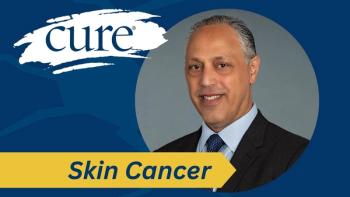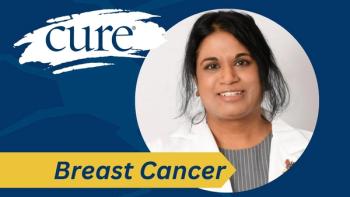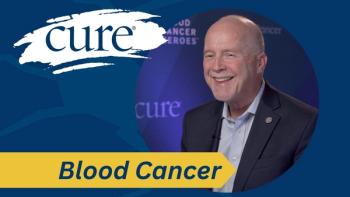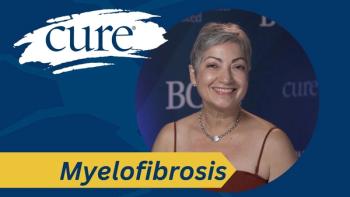
Chemo Drug Shortage Requires a ‘Holistic Solution’
Key Takeaways
- ASCO recommends alternative medications and adjusted chemotherapy cycles to manage the cancer drug shortage.
- The shortage of platinum-based chemotherapies affects multiple cancer types and is due to multifactorial issues, including supply and demand imbalances.
A chemotherapy shortage is resulting in altered treatment plans for many patients with cancer. CURE® spoke with experts about what that means for patients — and what they can do about it.
As the drug shortage of certain cancer therapies continues to drag on, clinicians and patients alike are growing increasingly concerned. The American Society of Clinical Oncology (ASCO) recently published clinical guidance on how clinicians can alter the treatment of their patients taking these agents in short supply.
ASCO’s recommendations include prescribing alternative medications, if available; increasing the length of time between chemotherapy cycles; and “miminiz(ing) or omit(ting) limited agent for recurrent or agent-resistant cancers.”
Of note, the shortage pertains to platinum-based chemotherapies, which are most commonly used to treat: lung, breast, head and neck, ovarian, esophageal, testicular and bladder cancers, as well as pediatric leukemia. The root of the issue is multifactorial, according to a statement from the American Cancer Society.
“Expanded demand, supply shortages, limited manufacturing capacity and low profit margins for generic therapies are among the factors resulting in the current nationwide shortage,” the American Cancer Society explained.
READ MORE:
“We are all having to ration these medications. The ASCO guidelines were provided to give oncologists guidance on the safest, most equitable way to distribute the medication we have,” Dr. Kristen Rice said in an interview with CURE®. “Having these guidelines helps alleviate some (though not much) of the moral distress of having to choose which patients get treated and which do not. Do you treat the mother with ovarian cancer who has two young children or the grandfather with lung cancer? I can't believe that as a physician in the wealthiest country in the world I'm even being asked to consider these questions.”
Drug Shortage May Impact Cancer Outcomes
Rice, who is a hematologist/oncologist from OneOncology in La Mesa, California, mentioned that a “one-week delay here or there” or a 10 to 20% reduction in dose is “unlikely to negatively impact outcomes,” and may decrease the amount of side effects patients experience.
“However, if critical shortages persist and patients start missing multiple doses or larger reductions are needed to spread out the existing supply, eventually a threshold will be crossed where patients are not receiving enough medicine consistently enough to keep the cancer under control,” she mentioned.
Conversely, Dr. Lucio N. Gordan, Florida Cancer Specialists president and managing physician, said that lengthening the time between chemotherapy treatments is likely to impact outcomes but unfortunately is the only option for certain oncology practices.
“Increasing interval between cycles is a way of rationing drugs. It will likely have an impact in clinical outcomes, either survival or quality of life or both. But if the alternative is not giving the drug, then increasing the interval is reasonable,” Gordan said in an interview with CURE®. “We are trying to provide alternatives that are similar or nearly similar, based on scientific publications. However, in some instances, there is a concern with outcomes.”
Not to mention, different treatments may come with different financial costs, too.
“Alternative regimens to replace a platinum-based combination may be more expensive to the payer. (For) example: if immunotherapy is used instead of carboplatin or cisplatin-based (prescription), it may be more expensive to insurer/payer. If the patient has a co-pay, it can possibly be higher, depending on terms of insurance coverage,” Gordan said.
Patients, Loved Ones Should Speak Up and Communicate With Care Team
Gordan urged patients and their loved ones to speak up to lawmakers about the chemotherapy shortage.
“(Patients) should know that physicians and practices are scrambling, doing the best they can to manage this crisis. Patients and families need to connect with their representatives in Washington, D.C., to raise awareness and increase the level of urgency to improve channels of importation and to fix how these drugs are priced to allow them to stay viable from a financial and production standpoint,” he said.
Patient-provider communication is essential, too, Rice said, emphasizing that clinicians should discuss alternative treatments — if needed — ahead of the scheduled therapy. Rice noted that she and her team have been as forthcoming as possible amid the shortage.
“It's hard for me to imagine that oncologists would keep such information from patients, but if your doctor isn't being forthcoming about the status of the shortage in your community, ask where things stand and how they plan to manage it,” she said. “If your next dose is two to three weeks away, start asking now if they have enough medication for you. If not, you can start working on plan B. If you are able to, that could mean traveling to a nearby center that has medication available.”
Rice also mentioned that the general public should be aware of these shortages, too.
“The public at large needs to be aware that this is how our system works and to demand change. They need to know that nobody is overseeing the production of critical medications in this country. Once drugs become generic and companies aren't making millions in profit anymore, there is no incentive to keep making them, and there is no law that they have to continue. There are no quotas,” Rice said. “In fact, we don't even have systems in place to monitor the quantity of medication needed, let alone to anticipate fluctuations in supply of the ingredients or demand for certain types of medication so that we can respond. Most of our generic medications are now made elsewhere, and many are made in only one facility.”
Current Approaches to Handling the Chemotherapy Shortage
According to a statement from Karen E. Knudsen, CEO of the American Cancer Society, said that Food and Drug Administration (FDA’s) mitigation strategies, “are largely confined to working directly with the manufacturer on whatever is causing the shortage, as well as working with other manufacturers of the same product to urge them to ramp up production. This ‘early warning’ approach makes up essentially all of the toolbox at their disposal,” she said.
“Both (American Cancer Society) and (American Cancer Society Cancer Action Network) continue to monitor and actively engage in the medical product shortage issue as part of our mission to improve the lives of people with cancer and their families,” Knudsen said. “(American Cancer Society) is communicating with health systems nationwide and talking directly to patients who call the American Cancer Society National Cancer Information Center. (American Cancer Society Cancer Action Network) is urging Congress to look at longer-term solutions that change the fundamental underpinnings of the shortages. In the meantime, we urge the industry to work with medical practitioners to help identify alternatives where possible to ensure that cancer patients’ treatments are not delayed.”
Rice also mentioned that some of her patients were able to secure drugs through Angels for Change, a volunteer-supported advocacy organization that is “on a mission to end drug shortages through advocacy, awareness and a resilient supply chain,” according to their website.
The organization does this through simultaneously advocating for patients while building relationships with members of the pharmaceutical supply chain.
“The crisis is not a new problem; we have had shortages in the past and we will have more in the future unless the government addresses this with a holistic solution,” Dr. Anjan J. Patel, an internist, oncologist and hematologist with Florida Cancer Specialists and associate professor at the Florida State University College of Medicine, said.
For more news on cancer updates, research and education, don’t forget to




